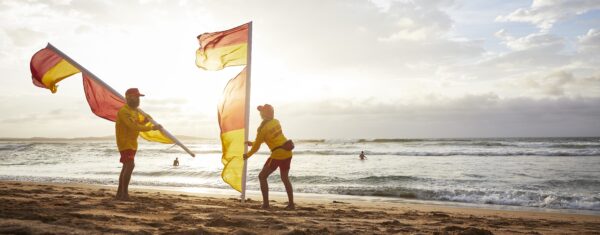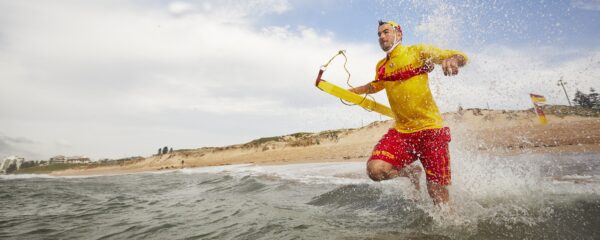And rip currents are the top coastal hazard for beach users, says Surf Life Saving Australia (SLSA) CEO Adam Weir.
The SLSA’s national drowning report for 2024 was recently launched in Canberra.
“Sadly, beaches saw a significant increase in drowning deaths this year with swimming at locations away from lifesaving services again a major risk,” Weir says.
“Tragically, there were 150 coastal drowning deaths recorded around the country, with 56 per cent occurring at beaches.”
Weir says seven out of 10 coastal drownings occurred more than one kilometre away from a lifesaving service.
“Never before have our surf lifesavers and lifeguards worked harder to keep people safe at Australian beaches, with over 2.4 million preventative actions and nearly 9000 rescues in the last 12 months,” Weir says.
“More and more are being asked of surf lifesavers and lifeguards each year as beach usage around the country continues to grow and people explore a wider range of coastal locations.”
The report says the 323 drownings recorded in the last 12 months was 16 percent higher than 10-year average of 278 deaths.
The report highlights that the danger increases 10-fold for swimmers aged 10 to 20 years due to risky behaviour combined with no or poor swimming and water safety skills.
Adults aged 65 years or older are drowning at rates 2½ times those of children under five or 28 per cent of all drownings, often due to underlying medical conditions, especially while boating or swimming, government says.
RLSA CEO Justin Scarr says swimming and water safety skills must be taught, especially for those in regional and migrant communities.
“The report is a reminder that many Australians now lack the skills to swim, float or stay safe in the water,” he says.
“It’s a reminder that drowning prevention starts at home, in schools and at local pools.”
Scarr says migrant communities are raising awareness and promoting programs but more has to be done.
“Governments can do more. Policies changes can help to ensure migrants, refugees and international students have early access programs in their local communities,” Scarr says.

Report highlights:
- 92 adults 65 years or older drowned (28% of the total), the largest number ever;
- 15 children under the age of 5 drowned, down by 25% on the 10-year average;
- 25% of victims were born overseas; largely from India, China, Nepal and United Kingdom; the proportion rises to 34 per cent over 10 years;
- People from disadvantaged and regional areas drowned at a higher rate, particularly children aged 5-14 years old;
- 46 per cent of drownings were in coastal locations (150) with 84 of those (26 per cent) at beaches;
- 34 per cent were at inland waterway locations (110) including 80 drowning (25 per cent) at rivers;
- 11 per cent occurred in swimming pools (35 deaths) of which 51 per cent involved backyard pools;
- December and March were likely to record the highest numbers of drownings.
Federal Minister for Aged Care and Sport Anika Wells says some basic steps are all it takes to ensure a safe experience.
“With some simple precautions we can all enjoy the water safely,” she says.
“Always supervise children around water, learn swimming, water safety and lifesaving skills, wear a lifejacket when boating, and always swim between the red and yellow flags.
“If you are over 55 and love the water, having a pre-summer medical check-up to ensure you are swim fit and refreshing your skills at the local swimming pool are two great water safety ideas ahead of summer,” Wells says.
Water safety tips:
- Always supervise children in, on and around water
- Learn swimming, water safety and lifesaving skills
- Wear a lifejacket when boating, rock fishing or paddling
- Swim at a patrolled beach between the red and yellow flags
- Avoid alcohol and drugs around water
- Check the conditions, including weather forecasts
- Use the Surf Life Saving BeachSafe App to locate patrolled beaches.







